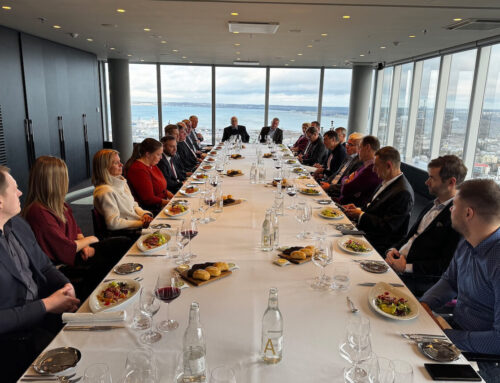Illar Kaasik
Managing Partner at Prudentia, member of the Rail Baltica Business Network
May 16, 2025 will go down in the history of Estonian infrastructure construction as the day the largest construction contracts in our country’s history were signed. Building two key sections of the Rail Baltica main line will bring a busy period for our construction sector in the coming years—an almost one-billion-euro scale that is rare in the Estonian market. This moment marks not only the start of the largest railway project, but also sets the course for the next decade of Estonia’s infrastructure construction sector.
The key question is—what happens after 2030, when Rail Baltica is completed and order volumes are expected to fall dramatically? The answer to that question will shape the sector’s future. When the Rail Baltica sections are finished by 2030, the sector may face a drop in volume that many companies will not be able to respond to immediately.
Consolidation Is Inevitable
In the longer term, Estonia’s infrastructure construction sector faces the unavoidable—consolidation, which may occur on several levels. First, weaker companies will seek stronger partners to avoid bankruptcy and preserve competence. Second, stronger players will use the opportunity to acquire competitors at lower prices during the downturn. Third, mergers will enable cost optimization and the realization of synergies.
Movements pointing to changing market dynamics are already visible. Some are seeking strong partners to survive; others are buying competitors cheaply to increase market share. For example, the sale of TREV-2 to local investors and Verston Ehitus’s ambition to expand into the Polish and Romanian markets show that strategies differ, but the pace of change is intense.
Consolidation is not inherently bad. It can create stronger and more efficient companies that are able to survive even in economically unstable times. At the same time, it is a harsh reality for smaller players—exiting the market or being absorbed by larger ones is often the only path.
New Opportunities Open Up
The completion of Rail Baltica does not necessarily mean decline for the infrastructure construction sector. On the contrary—several new opportunities are emerging.
The green transition and electrification favor further development of the rail network. The European Union has set ambitious climate targets that require significant investment in sustainable transport.
At the NATO and EU levels, new funding frameworks for 2028–2034 are being discussed, with connectivity and military mobility as priorities. Given the geopolitical situation, infrastructure investment may in fact increase rather than decrease.
Exporting Competence as an Opportunity
The Rail Baltica project is creating unique, modern railway-infrastructure expertise in Estonia, and that may become our major competitive advantage on the international market. There is already talk that Estonian teams could help manage similar projects in Latvia and elsewhere.
Exporting competence does not only mean expanding into foreign markets. It also means offering higher value-added services—project management, specialized consulting, and technology transfer. These areas are far less cyclical than standard construction activity.
PPP Models Are Waiting for Their Moment
Public–private partnership (PPP) has been underestimated in Estonia so far. Although the state has preferred direct financing, Latvia’s Riga Ring Road example shows that a PPP model can also be successful.
The main value of the PPP model is not just the financial resource, but also accelerated project delivery and better risk allocation. The socio-economic impact of this model should not be underestimated—rapid infrastructure build-out creates significantly greater value for society than years of traditional financing.
In Summary
Rail Baltica is a mega-project for Estonian infrastructure construction that gives the sector the competence and experience we can use over the coming decades. At the same time, Rail Baltica is not just a big construction project—it is a transformation of Estonia’s infrastructure construction sector.
Those who sit and wait for the state to place new orders may fall behind. The winners will be those who act today—seek new markets, invest in exporting competence, and adopt more flexible financing models. The sector indeed faces challenges, but those who can think long-term and adapt to new opportunities will find their place in the post–Rail Baltica landscape.
Prudentia is a financial advisory firm operating in Estonia and Latvia that has advised numerous M&A transactions, including the sale of AS ESRO to AS Gren Eesti.






